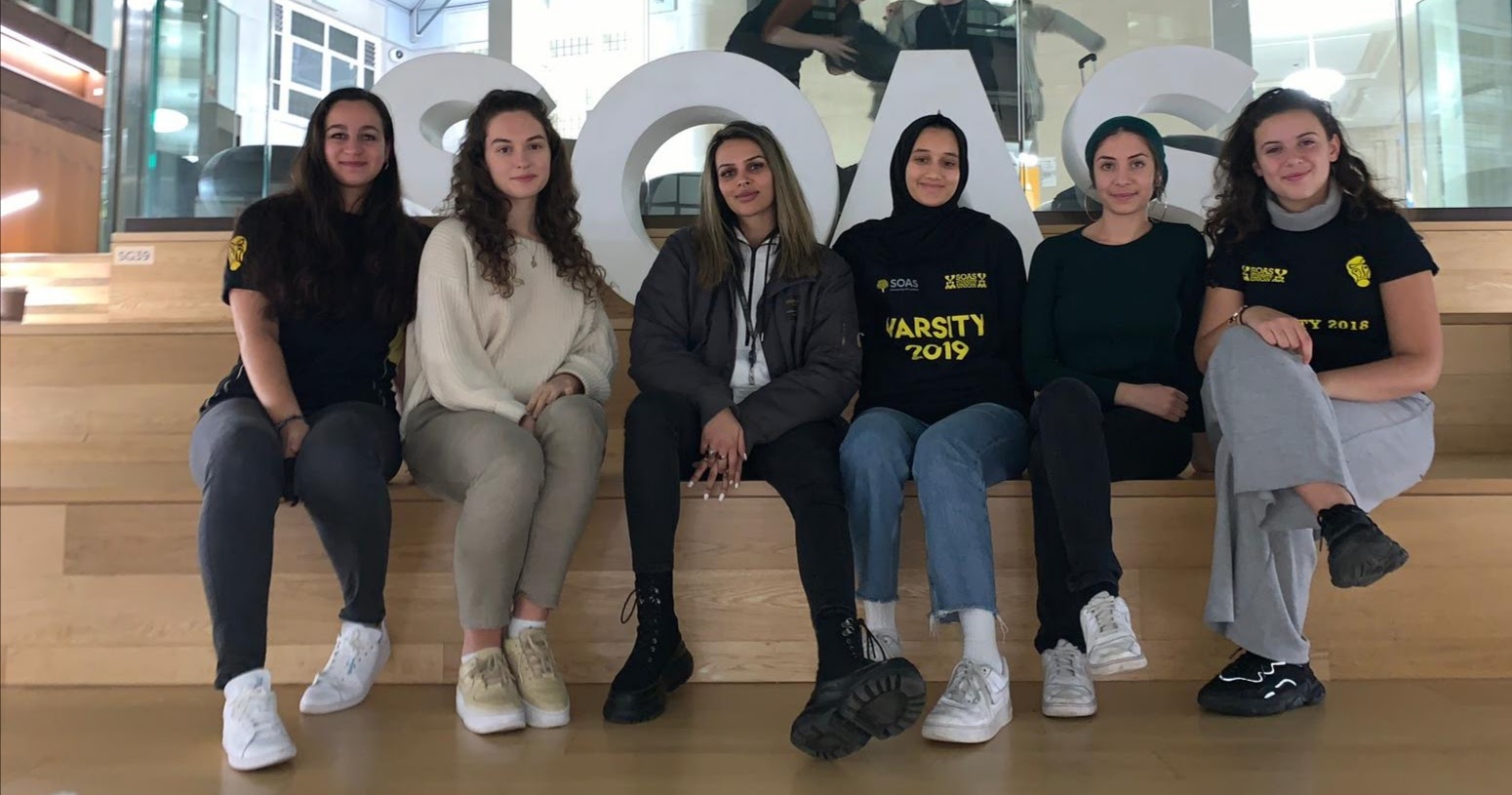Imaan Khan, BA Social Anthropology and Politics
These athletes contribute to the success of their respective teams and the spirit of SOAS both on and off the field, taking pride in stepping onto the court wearing the black and yellow colors of the SOAS warriors.
The topic of Muslim women in sports is multifaceted, including women from diverse national and ethnic backgrounds, of different ages and abilities, women who choose to wear hijab and those who choose not to. This topic seems to be rarely discussed, not only in the sports community but the Muslim community as well. All this to say; it’s not an easy topic to cover. However, difficulty should be viewed just as it is on the court or field: as a challenge. Something to tackle head on, as opposed to something to be swept under the rug or avoided.
Underrepresentation of Muslim women in the world of sports is a twofold issue. There exists, at least in the western world, a relatively smaller amount of young Muslim women and girls going into sports, even at amateur levels. Muslim women athletes, often find themselves sanwiched between both the restrictions and judgement of wider soiciety and their own personal communites and therefor must overcome a myriad of obstacles on top of the physical and mental demands of her chosen sport. On a global scale in terms of recent history, Muslim women in sports have made numerous accomplishments, with some making headlines worldwide. These stories both praised the accomplishments of these talented athletes and highlight the struggle Muslim women must undergo to claim their space in the sporting arena. Most recently 18-year-old Khadijah Mellah reached national headlines making history as not only the first hijab wearing jockey to enter a race in Britain, but also the first to win a race. Ibtihaj Muhammad, a professional fencer, the first Muslim-American athlete to earn a medal at the Olympics also gained worldwide recognition. Despite the rigor with which Muslim women worldwide have shown in the area of sports certain structural setbacks have prevented the flourishment of these athletes. These setbacks are almost always regarding dress code regulations and the mainstream obsession with how Muslim women choose to dress. Internationally recognized organizations such as FIFA had placed bans on hijabs and other head coverings until 2014 while FIBA only just lifted their ban in 2017. Unfortunately, throughout history the prohibition of hijabs in sports has prevented the potential success of both individuals and whole national teams at the Olympic level, with certain countries pulling their teams in protest of these bans, which were in place until 2014.
While these particular bans have been lifted, there still exist regulations preventing those who choose to dress differently from competing in the sport they love. As of late, global attention has been shifted to the consumer aspect of Muslim women in sports with Nike releasing the Nike Pro Hijab in 2017 more recently their modest swimsuit release in late 2019. While these developments are no doubt able to be critiqued through a lens of promoting diversity solely foreconomic gains, it nevertheless has made the journey of Muslim women in sports slightly easier for the Muslim women who do choose to follow a certain dress code and can be seen as a step forward for Muslim athletes.
The benefits of living an active and healthy lifestyle are countless. On top of these benefits the ability to interact and compete with team members of different beliefs and backgrounds provides a unique bonding opportunity, allowing for players to engage in a variety of interesting dialogues while all the while creating friendships and working towards a common goal. In terms of looking at Muslim women athletes more locally, SOAS provides an excellent example for the accomplishments of Muslim women in the field of sports. While the goal of SOAS sports team is to win and excel, it is insisting to see young women of different faiths and cultures working and improving together in such an inclusive environment. This year’s Sports officer is a Muslim woman and the women’s basketball team has been led by Muslim hijab wearing captains for two consecutive years, with this year’s committee being entirely composed of Muslim women. Athletes who identify as Muslim women and come from diverse backgrounds, are a part of a variety of teams at SOAS. These athletes contribute to the success of their respective teams and the spirit of SOAS both on and off the field, taking pride in stepping onto the court wearing the black and yellow colors of the SOAS warriors.
a few of the many muslim women members of soas sports from the basketball, football and netball teams. A group meetup was held where we discussed the reality of muslima athletes.
